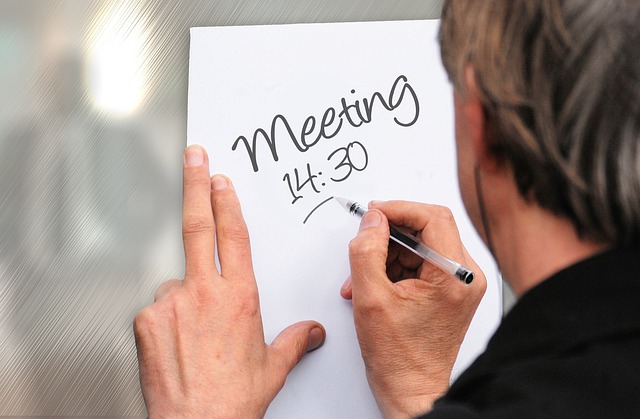5 Steps to Improving Engagement in Meetings

The interview for that new job you’re hoping to get. The coffee date with your personal hero, and hopefully, future mentor. The make-or-break sales demo with that perfect-fit client. The last-ditch attempt to mend a broken partnership. When everyone in the room understands what’s at stake, engagement in meetings like these is automatic. We don’t worry about engagement in these situations. Instead, we focus on success.
When you are clear about why your group needs to meet and what you want to accomplish together, engagement is natural. Sadly, many meetings lack this clarity.
The good news: every meeting can be as focused, compelling, and engaging as the high-stakes meetings listed above when you follow these five steps:
Define what you want people to contribute.
Get clear about what you want to help each person actively do or say during the meeting. Engagement involves more than simply paying attention; active engagement results in observable behavior.
It helps to visualize the meeting in advance and think through everyone invited. Picture in your mind what each person will do in your best-case scenario. That’s the engagement you want.
Tip: if you picture someone just listening quietly, they probably don’t belong at your meeting. Of the 16 types of meetings businesses run, only two (Training and Broadcasts) expect a passive audience. The rest of our business meetings are not spectator sports; only active players belong in the game.
Ask for engagement.
Do you want written feedback? Verbal input in a go-around? A show of hands? Get specific and provide examples.
This seems obvious, and that’s actually the problem. To the person leading the meeting, it’s obvious how things should play out because they thought about it in advance. Meeting leaders frequently forget to fill everyone else in, though. They don’t give people advance notice about how to prepare for the meeting, and don’t ask clear questions during the meeting, then get frustrated when no one participates.
Remember, you must explicitly ask for engagement to get engagement.

Make space for people to engage.
Make sure you have enough meeting time for engagement. For example, to get feedback from 10 people with each speaking for just 2 minutes, you need 20 minutes.
Many leaders prefer meetings with 5 or fewer people precisely because it’s far easier to make sure everyone has a chance to contribute in a small group.
We can’t keep all meetings tiny, though. With more people involved, you have three options:
- Make the meeting longer so everyone has time to speak.
- Break out some facilitation skills. There are great ways to engage large groups, all of which require advance planning and some know-how to pull off.
- Accept that you’re going to basically ignore some of the people in the meeting.
This last option is the default choice in most corporations. It’s also a lousy way to treat people
Acknowledge contributions.
At the very least, people who make a contribution to the meeting deserve thanks.
For many individuals, speaking up in a group means taking a personal risk. Some people are shy, and some environments are hostile. Whether the risk arises from internal or external factors, it still takes courage and effort to overcome. When this contribution is then glossed over, when it’s dismissed, or when you haven’t made time for it, people learn that the risk was not worth the effort.
Many high-performing teams make a point of reserving time at the end of each meeting for sharing appreciations, where individuals publicly thank one another for specific contributions. This is a fabulous way to acknowledge the value people bring, improve team relationships, and reinforce the benefits of contributing for those who might be reluctant to speak up.
Use what you receive.
Most importantly, make sure contributions made during the meeting impact what happens after the meeting. With our high-stakes meetings, this is a no-brainer. Can you imagine a sales person failing to send over a contract after a successful demo? Hardly. In these cases, we know that the decisions we make in the meeting will result in action after the meeting.
That shouldn’t be different for other meetings, and yet too often it is.

For example, strategic planning workshops are notorious for creating a significant outcome that never gets used, and not because they fail to engage participants. It’s possible to run a fabulously engaging workshop to build out your company’s strategic plan, only to then have that plan sit on the shelf for a year.
When it comes to engagement, the rule is use it or lose it. Clever facilitation tricks can’t get people engaged if they learn it doesn’t matter. When people see they made a difference, however, they’ll contribute again.
Every meeting presents an opportunity for engagement and the creation of new value. For some meetings, this opportunity is obvious. For others, we have work to do. When you follow the five simple steps outlined above, you’ve got a great shot at transforming every meeting into one worth your team’s investment.
This guest post was authored by Elise Keith

- Elise Keith is the co-founder of Lucid Meetings and the author of Where the Action Is: The Meetings That Make or Break Your Organization. For more information, please visit, www.lucidmeetings.com and connect with her on Twitter, @EliseID8.

